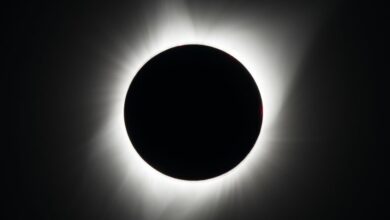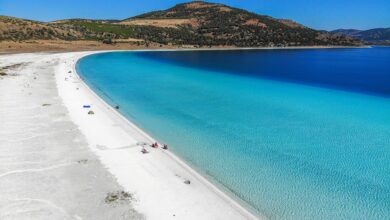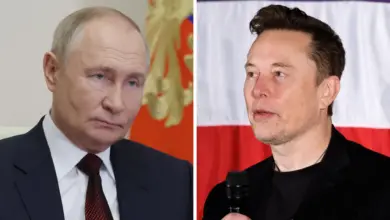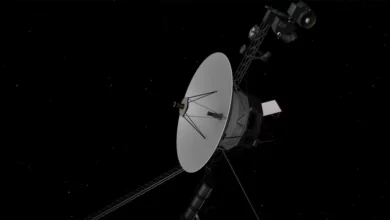
CAPE CANAVERAL, Fla. (AP) — SpaceX safely returned four astronauts from the International Space Station on Sunday, making the first U.S. crew splashdown in darkness since the Apollo 8 moonshot.
The Dragon capsule parachuted into the Gulf of Mexico off the coast of Panama City, Florida, just before 3 a.m., ending the second astronaut flight for Elon Musk’s company.
It was an express trip home, lasting just 6 1/2 hours.
The astronauts, three American and one Japanese, flew back in the same capsule — named Resilience — in which they launched from NASA’s Kennedy Space Center in November.
“We welcome you back to planet Earth and thanks for flying SpaceX,” SpaceX’s Mission Control radioed moments after splashdown. “For those of you enrolled in our frequent flyer program, you’ve earned 68 million miles on this voyage.”
“We’ll take those miles,” said spacecraft commander Mike Hopkins. “Are they transferrable?” SpaceX replied that the astronauts would have to check with the company’s marketing department.
Within a half-hour of splashdown, the charred capsule — resembling a giant toasted marshmallow — had been hoisted onto the recovery ship.
Hopkins was the first one out, doing a little dance as he emerged under the intense spotlights.
“It’s amazing what can be accomplished when people come together,” he told SpaceX flight controllers at company headquarters in Hawthorne, California. “Quite frankly, you all are changing the world. Congratulations. It’s great to be back.”
The 167-day mission was the longest for a crew capsule launching from the U.S. The previous record of 84 days was set by NASA’s final Skylab station astronauts in 1974.
Saturday night’s undocking left seven people at the space station, four of whom arrived a week ago via SpaceX.
“Earthbound!” NASA astronaut Victor Glover, the capsule’s pilot, tweeted after departing the station. “One step closer to family and home!”
Hopkins and Glover — along with NASA’s Shannon Walker and Japan’s Soichi Noguchi — should have returned to Earth last Wednesday, but high offshore winds forced SpaceX to pass up a pair of daytime landing attempts. Managers switched to a rare splashdown in darkness, to take advantage of calm weather.
SpaceX had practiced for a nighttime return, just in case, and even recovered its most recent station cargo capsule from the Gulf of Mexico in darkness. Infrared cameras tracked the capsule as it re-entered the atmosphere; it resembled a bright star streaking through the night sky.
All four main parachutes could be seen deploying just before splashdown, which was also visible in the infrared.
Apollo 8 — NASA’s first flight to the moon with astronauts — ended with a predawn splashdown in the Pacific near Hawaii on Dec. 27, 1968. Eight years later, a Soviet capsule with two cosmonauts ended up in a dark, partially frozen lake in Kazakhstan, blown off course in a blizzard.
That was it for nighttime crew splashdowns — until Sunday.
Despite the early hour, the Coast Guard was out in full force to enforce an 11-mile (18-kilometer) keep-out zone around the bobbing Dragon capsule. For SpaceX’s first crew return in August, pleasure boaters swarmed the capsule, a safety risk.
Once finished with their medical checks on the ship, the astronauts planned to hop on a helicopter for the short flight to shore, then catch a plane straight to Houston for a reunion with their families.
Their capsule, Resilience, will head back to Cape Canaveral for refurbishment for SpaceX’s first private crew mission in September. The space station docking mechanism will be removed, and a brand new domed window put in its place.
A tech billionaire has purchased the entire three-day flight, which will orbit 75 miles (120 kilometers) above the space station. He’ll fly with a pair of contest winners and a physician assistant from St. Jude Children’s Research Hospital, his designated charity for the mission.
SpaceX’s next astronaut launch for NASA will follow in October.
NASA turned to private companies to service the space station, after the shuttle fleet retired in 2011. SpaceX began supply runs in 2012 and, last May, launched its first crew, ending NASA’s reliance on Russia for astronaut transport.
Boeing isn’t expected to launch astronauts until early next year.
___
The Associated Press Health and Science Department receives support from the Howard Hughes Medical Institute’s Department of Science Education. The AP is solely responsible for all content.
Image: In this image made from NASA TV video, the SpaceX Dragon capsule floats after landing in the Gulf of Mexico near the Florida Panhandle early Sunday, May 2, 2021. SpaceX returned four astronauts from the International Space Station on Sunday, making the first U.S. crew splashdown in darkness since the Apollo 8 moonshot. (NASA TV via AP)




